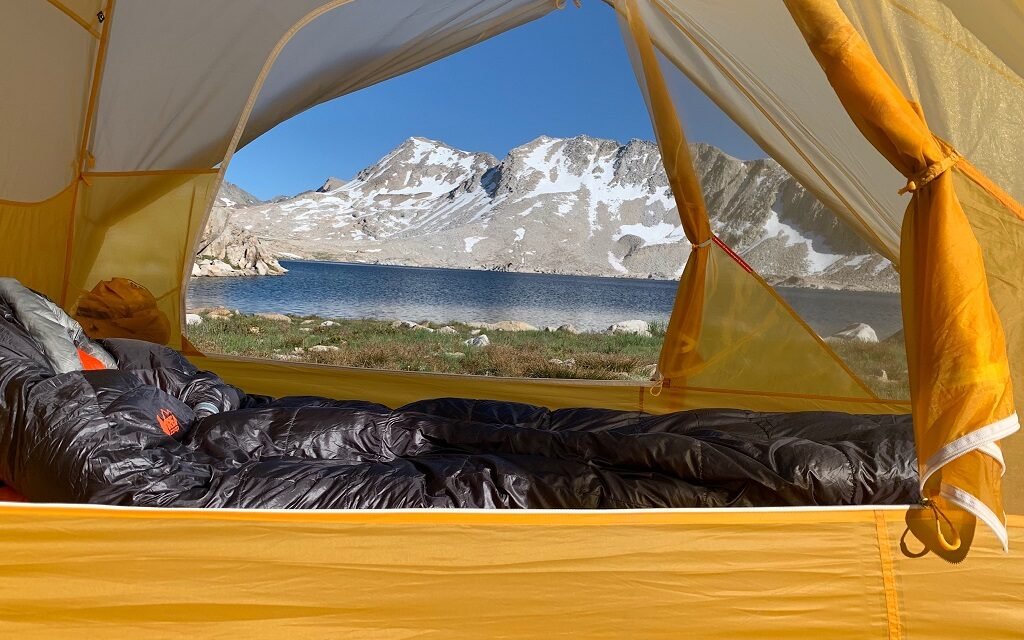That’s great! I see a lot of posts on social media that are “I want to go backpacking but I don’t know where to start”. A lot of questions about the gear you need, safety considerations, what food to bring, and which trail to pick. Sometimes it can all seem overwhelming. The good news is it’s not and after a short while, most of it will seem like second nature. I thought I’d put this post together as a few simple, introductory steps to a successful first backpacking trip.
First of all – this should be your second trip. Your first trip should be in the backyard or a campsite – just to make sure all your gear behaves as you expect it to. Certainly being on trail and trying to work out how your tent works, is not ideal.
As always I’ll pick most of my examples from around the Portland area – if you happen to be here all the better – we are blessed with some great hiking. I’ll assume you are completely new to backpacking – but you’ve probably got some hiking experience.
There are also some great stores that are worth getting to know. REI provides excellent outdoor equipment with an awesome return policy and a generally knowledgeable staff. But there are many others as well.
Gear
Maybe the most mystifying part of backpacking is the myriad of gear options. You can see folks discussing the benefits of sleeping bags over quilts, the lightest tent, whether to use a hammock and what the latest, lightest fork is. Working out what kind of gear to get when you are not sure if you’ll like the adventure can be challenging. There are actually many options for getting gear together for starting your adventure, including looking for second-hand gear, borrowing, or renting. The basic gear you’ll need for backpacking fall into the following categories.
The Big 3 – shelter, backpack and sleep
The Big 3 usually refers to the heaviest three items: shelter, backpack, and sleep system.
Kitchen – cooking, water and cleanup
Now that you have shelter and sleep sorted you need to set up your kitchen.
Hygiene & Medical – keeping clean and healthy
Keeping clean and well – hygiene and medical kits.
Safety – essential items for any trip
The 10 essentials and more!
Electronics – can’t go anywhere without them!
How to conserve power and charge electronics.
Clothes
What to take and how many, it all depends on the weather. Basic backpacking clothes.
How to pack it all
Although this seems like a lot – when you have this mastered there is not much difference in packing for an overnight trip or a long-distance hike. This is what I took on a 5-day hike in the Sierra.
It’s important to make sure that you can keep dry what you need to keep dry. This is particularly important for the clothes and sleeping bag that you need to keep yourself warm – especially if you have to hunker down for a day. There are two good ways of ensuring the contents of your pack stays dry. The traditional method is a pack cover. These basically slip over your pack and protect it from the weather. An alternate approach, which is favored by many thru-hikers, is to line the inside of your pack with a trash compactor bag. I like this approach for a couple of reasons. It really does make sure that the items you want to stay dry do stay dry. I often find that with a pack cover, in heavy rain, there is often still the possibility of leaks. Also with a trash compactor bag, it actually makes sliding your gear into the pack easier. When you have lined the pack and stowed your contents, make sure to fold or roll the top down to make it waterproof. I also find this method is more reliable in the unfortunate case where your pack slips into a stream or some such accident.
Food
Here’s a basic introduction to food. Of course for a multi-day trip it’s necessary to put more effort into food planning.
Dry Run
Before you head out into the mountains for your first overnight trip, do a full dry run. This can be as simple as in your backyard or maybe your favorite car camping spot. But pack your backpack as you mean to take it on your hike and only use its contents for the night. Make sure you know how to set up your tent, stake it out well. That your stove works and you haven’t forgotten any of the little things like lighters. Sleep on your pad to make sure it stays inflated. Get an idea of how warm you feel in your sleeping bag for the temperature. This will all help you feel more confident in your equipment when you take it out.
Heading for the Mountains
So you have got all your gear together, packed your pack, done a dry run or two, and now you are ready to head to the mountains. There are a few things you’ll want to make sure of for a final preparation:
- Pick your route. There are many resources available, but start off with something easy so that you can both hike in and hike out easily, and its not too far if you need to change plans. Around Mount Hood, the Salmon River Trail is a great trail for a first backpacking. The trail is relatively flat, it follows the river, so water is easy to access and the scenery is beautiful. There are plenty of great camping spots.
- Check the weather. Make sure you understand what the weather will be for the entire trip and make sure you have the appropriate clothing.
- Set up all the navigation aids you need and make sure you have a map and compass.
- Make sure you understand the rules of the land management agency that owns the land you’ll be hiking on. This will often determine the permits needed and the parking passes required.
- Make sure you tell someone where you will be going and when you’ll be expected back.
Go out and enjoy!






